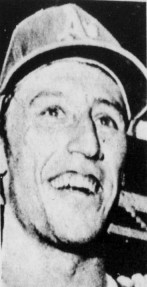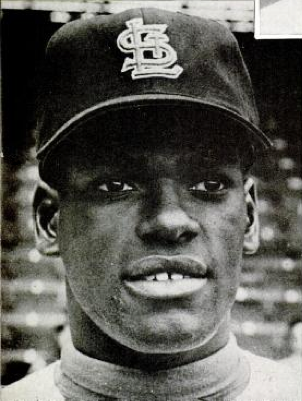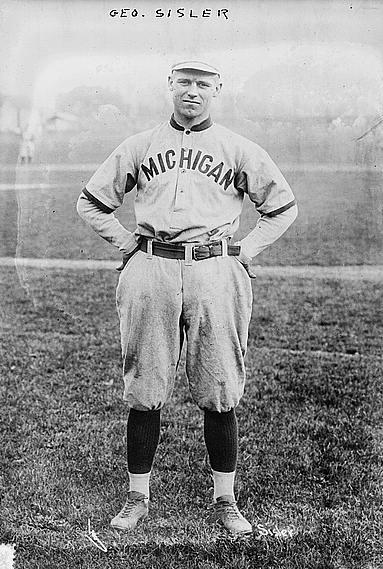|
Parkview, St. Louis, Missouri
Parkview, also known as a "Saint Louis Urban Oasis," is a historic, private subdivision of St. Louis, Missouri. It is partly within the city limits of St. Louis and partly in University City. It is bounded by the Skinker-DeBaliviere neighborhood to the east, the Delmar Loop to the north, the Ames Place section of University City to the west, Washington University in St. Louis to the south, and Forest Park to the southeast. History Much of the land that became Parkview was, in the mid-19th century, contained in the Kingsbury Farm. In 1905, surveyor Julius Pitzman, also the designer of Forest Park, was hired to lay out Parkview. Parkview was the largest and the last of the private neighborhoods designed by Julius Pitzman (he also designed Portland and Westmoreland Places and Compton Heights). His elegant design for the neighborhood includes a partly symmetrical arrangement of gently curved streets and parks. Curving streets in residential subdivisions was unusual for t ... [...More Info...] [...Related Items...] OR: [Wikipedia] [Google] [Baidu] |
University City, Missouri
University City (colloquially, U. City) is an inner-ring suburb of the city of St. Louis in St. Louis County, Missouri, St. Louis County, in the U.S. state of Missouri. The population was measured at 35,065 by the 2020 United States Census, 2020 census. The city is one of the older suburbs in the St. Louis area, having been a streetcar suburb in the late 19th and early 20th centuries; much historic architecture remains in the southern, older portion of the city, particularly along Delmar Boulevard. The northern portions of the city, mostly developed after World War II, have more of a suburban feel with many shopping centers and other automobile-centered development. The city is named for nearby Washington University. University City has much municipal open space, the largest parcels being Heman Park (which includes recreation and community centers and public pool facilities) and Ruth Park (a public golf course and nature trails). The city has four elementary schools, one middle ... [...More Info...] [...Related Items...] OR: [Wikipedia] [Google] [Baidu] |
Aimee Schweig
Aimee Gladstone Schweig (1892–1987) was an American artist known as one of the founders of the Ste. Genevieve Art Colony. Her paintings depict primarily local subjects from the Ste. Genevieve and other Missouri areas. Biography Schweig was born on January 30, 1892, in St. Louis, Missouri. She was married to the photographer Martin Schweig, Sr. She was the mother of the artist Martyl Schweig Langsdorf, and the portrait photographer Martin Schweig, Jr. She studied at the St. Louis School of Fine Arts at Washington University in St. Louis. She continued her studies at the Provincetown Art Colony ( Provincetown, Massachusetts) In the early 1930s, during the Great Depression and after the closing of Provincetown art colony, Schweig along with Jessie Beard Rickly and Bernard E. Peters established the Ste. Genevieve Art Colony in Ste. Genevieve, Missouri. Schweig taught art at the Mary Institute for over two decades. She was a member of the National Association of Women Artists ... [...More Info...] [...Related Items...] OR: [Wikipedia] [Google] [Baidu] |
Historic Districts On The National Register Of Historic Places In Missouri
History (derived ) is the systematic study and the documentation of the human activity. The time period of event before the invention of writing systems is considered prehistory. "History" is an umbrella term comprising past events as well as the memory, discovery, collection, organization, presentation, and interpretation of these events. Historians seek knowledge of the past using historical sources such as written documents, oral accounts, art and material artifacts, and ecological markers. History is not complete and still has debatable mysteries. History is also an academic discipline which uses narrative to describe, examine, question, and analyze past events, and investigate their patterns of cause and effect. Historians often debate which narrative best explains an event, as well as the significance of different causes and effects. Historians also debate the nature of history as an end in itself, as well as its usefulness to give perspective on the problems of the p ... [...More Info...] [...Related Items...] OR: [Wikipedia] [Google] [Baidu] |
Residential Buildings On The National Register Of Historic Places In Missouri
A residential area is a land used in which housing predominates, as opposed to industrial and commercial areas. Housing may vary significantly between, and through, residential areas. These include single-family housing, multi-family residential, or mobile homes. Zoning for residential use may permit some services or work opportunities or may totally exclude business and industry. It may permit high density land use or only permit low density uses. Residential zoning usually includes a smaller FAR (floor area ratio) than business, commercial or industrial/manufacturing zoning. The area may be large or small. Overview In certain residential areas, especially rural, large tracts of land may have no services whatever, such that residents seeking services must use a motor vehicle or other transportation, so the need for transportation has resulted in land development following existing or planned transport infrastructure such as rail and road. Development patterns may be r ... [...More Info...] [...Related Items...] OR: [Wikipedia] [Google] [Baidu] |
Buildings And Structures In St
A building, or edifice, is an enclosed structure with a roof and walls standing more or less permanently in one place, such as a house or factory (although there's also portable buildings). Buildings come in a variety of sizes, shapes, and functions, and have been adapted throughout history for a wide number of factors, from building materials available, to weather conditions, land prices, ground conditions, specific uses, prestige, and aesthetic reasons. To better understand the term ''building'' compare the list of nonbuilding structures. Buildings serve several societal needs – primarily as shelter from weather, security, living space, privacy, to store belongings, and to comfortably live and work. A building as a shelter represents a physical division of the human habitat (a place of comfort and safety) and the ''outside'' (a place that at times may be harsh and harmful). Ever since the first cave paintings, buildings have also become objects or canvasses of much artistic ... [...More Info...] [...Related Items...] OR: [Wikipedia] [Google] [Baidu] |
Neighborhoods In St
A neighbourhood (British English, Irish English, Australian English and Canadian English) or neighborhood (American English; see spelling differences) is a geographically localised community within a larger city, town, suburb or rural area, sometimes consisting of a single street and the buildings lining it. Neighbourhoods are often social communities with considerable face-to-face interaction among members. Researchers have not agreed on an exact definition, but the following may serve as a starting point: "Neighbourhood is generally defined spatially as a specific geographic area and functionally as a set of social networks. Neighbourhoods, then, are the spatial units in which face-to-face social interactions occur—the personal settings and situations where residents seek to realise common values, socialise youth, and maintain effective social control." Preindustrial cities In the words of the urban scholar Lewis Mumford, "Neighbourhoods, in some annoying, inchoate fash ... [...More Info...] [...Related Items...] OR: [Wikipedia] [Google] [Baidu] |
Charles Guggenheim
Charles Eli Guggenheim (March 31, 1924 – October 9, 2002) was an American documentary film director, producer, and screenwriter. He was the most honored documentary filmmaker in the academy history, winning four Oscars from twelve nominations. Early life Guggenheim was born in Cincinnati, Ohio, into a prominent German-Jewish family, the son of Ruth Elizabeth ( Stix) and Jack Albert Guggenheim. His father and grandfather had a furniture business.''Encyclopaedia Judaica'' (2007) He had dyslexia as a child but the condition went undiagnosed and he was thought to be a "slow learner." He did not learn to read until the age of nine.''Newsmakers'' (2003) Gale. Detroit While studying farming at Colorado A&M in 1943, Guggenheim was drafted into the United States Army assigned to the 106th Division. Due to a severe foot infection, he avoided active duty in the Battle of the Bulge. Upon discharge from the service, he finished his college education at University of Iowa in 1948 and the ... [...More Info...] [...Related Items...] OR: [Wikipedia] [Google] [Baidu] |
Bob Gibson
Robert Gibson (born Pack Robert Gibson; November 9, 1935October 2, 2020) was an American professional baseball pitcher who played 17 seasons in Major League Baseball (MLB) for the St. Louis Cardinals (1959–1975). Nicknamed "Gibby" and "Hoot" (after actor Hoot Gibson), Gibson tallied 251 wins, 3,117 strikeouts, and a 2.91 earned run average (ERA) during his career. A nine-time All-Star and two-time World Series champion, he won two Cy Young Awards and the 1968 National League (NL) Most Valuable Player (MVP) Award. Known for a fiercely competitive nature and for intimidating opposing batters, he was elected in 1981 to the Baseball Hall of Fame in his first year of eligibility. The Cardinals retired his uniform number 45 in September 1975 and inducted him into the team Hall of Fame in 2014. Born in Omaha, Nebraska, Gibson overcame childhood illness to excel in youth sports, particularly basketball and baseball. After briefly playing under contract to both the Harlem Globetrott ... [...More Info...] [...Related Items...] OR: [Wikipedia] [Google] [Baidu] |
George Sisler
George Harold Sisler (March 24, 1893 – March 26, 1973), nicknamed "Gorgeous George", was an American professional baseball first baseman and player-manager. From 1915 through 1930, he played in Major League Baseball (MLB) for the St. Louis Browns, Washington Senators, and Boston Braves. He managed the Browns from 1924 through 1926. Sisler played college baseball for the University of Michigan and was signed by the St. Louis Browns in 1915. He won the American League (AL) batting title in 1920 and 1922. In 1920, he batted .407 and recorded 257 hits, the record until Ichiro Suzuki had 262 in 2004. Sisler won the AL Most Valuable Player Award in 1922, finishing with a batting average of .420, the third-highest batting average by AL or NL players after 1900. An attack of sinusitis caused vision troubles that jeopardized Sisler's career, but he returned to playing in 1924, remaining in the major leagues through the 1930 season. After Sisler retired as a player, he worked as a ma ... [...More Info...] [...Related Items...] OR: [Wikipedia] [Google] [Baidu] |
Jimmy Doolittle
James Harold Doolittle (December 14, 1896 – September 27, 1993) was an American military general and aviation pioneer who received the Medal of Honor for his daring raid on Japan during World War II. He also made early coast-to-coast flights, record-breaking speed flights, won many flying races, and helped develop and flight-test instrument flying. Raised in Nome, Alaska, Doolittle studied as an undergraduate at University of California, Berkeley, graduating with a Bachelor of Arts in 1922. He also earned a doctorate in aeronautics from the Massachusetts Institute of Technology in 1925, the first issued in the United States. In 1929, he pioneered the use of "blind flying", where a pilot relies on flight instruments alone, which later won him the Harmon Trophy and made all-weather airline operations practical. He was a flying instructor during World War I and a reserve officer in the United States Army Air Corps, but he was recalled to active duty during World War II. He was ... [...More Info...] [...Related Items...] OR: [Wikipedia] [Google] [Baidu] |
William Gass
William Howard Gass (July 30, 1924 – December 6, 2017) was an American novelist, short story writer, essayist, critic, and philosophy professor. He wrote three novels, three collections of short stories, a collection of novellas, and seven volumes of essays, three of which won National Book Critics Circle Award prizes and one of which, ''A Temple of Texts'' (2006), won the Truman Capote Award for Literary Criticism. His 1995 novel '' The Tunnel'' received the American Book Award. His 2013 novel ''Middle C'' won the 2015 William Dean Howells Medal. Early life and education William Howard Gass was born on July 30, 1924, in Fargo, North Dakota. Soon after his birth, his family moved to Warren, Ohio, a steel town, where he attended local schools. He described his childhood as an unhappy one, with an abusive, racist father and a passive, alcoholic mother; critics would later cite his characters as having these same qualities. His father had been trained as an architect but, whi ... [...More Info...] [...Related Items...] OR: [Wikipedia] [Google] [Baidu] |
Stanley Elkin
Stanley Lawrence Elkin (May 11, 1930 – May 31, 1995) was an American novelist, short story writer, and essayist. His extravagant, satirical fiction revolves around American consumerism, popular culture, and male-female relationships. Biography Elkin was born to a Jewish family in Brooklyn, New York, and grew up in Chicago from age three onwards. He did both his undergraduate and graduate work at the University of Illinois at Urbana–Champaign, receiving a bachelor's degree in English in 1952 and a Ph.D. in 1961 for his dissertation on William Faulkner. During this period he was drafted and served in the U.S. Army from 1955 to 1957. In 1953 Elkin married Joan Marion Jacobson. He was a member of the English faculty at Washington University in St. Louis from 1960 until his death, and battled multiple sclerosis for most of his adult life. In 1968, he signed the "Writers and Editors War Tax Protest" pledge, vowing to refuse tax payments in protest against the Vietnam War. During ... [...More Info...] [...Related Items...] OR: [Wikipedia] [Google] [Baidu] |

.jpg)




